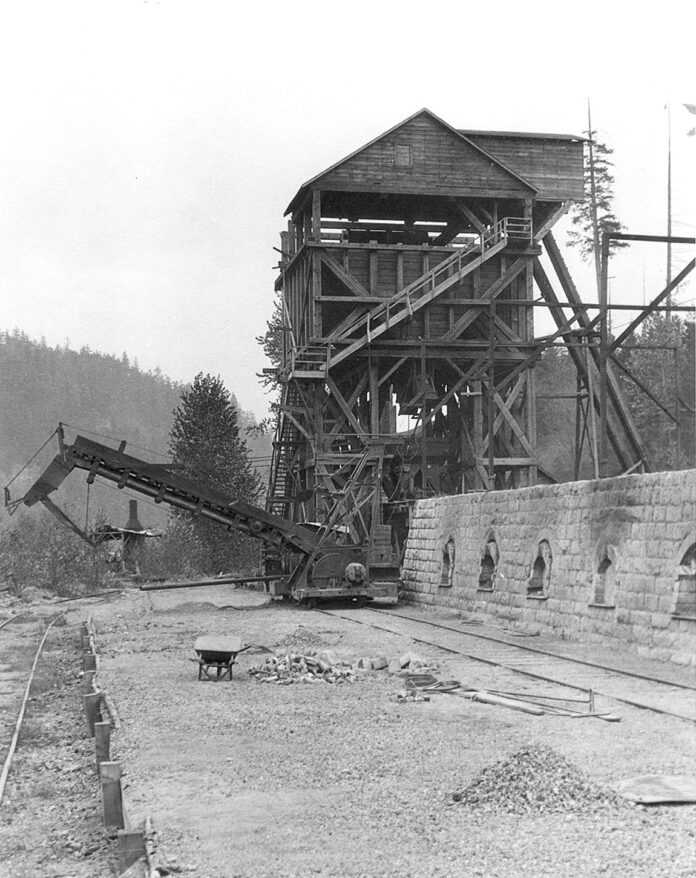Crocker was a station on the Northern Pacific Railroad line serving the coal mining communities of Wilkeson, Carbonado, South Willis, Melmont, and Fairfax in east Pierce County. Located near Orting, Crocker was at the junction of the Buckley and Wilkeson branch lines of the railway.
In the late 1800s and early 1900s, Pierce County’s coal was the most important source of coke on the Pacific Coast. By 1912 there were over 300 ovens producing nearly 80,000 tons annually. Coke is a by-product produced when coals with certain “coking” properties are heated at high temperatures in airless ovens to drive off volatile constituents. The resulting coke is a high carbon additive in metallurgical processes such as making steel. The name Crocker came from Charles Crocker, a railroad executive and co-founder of the Central Pacific Railroad. In 1882, Charles Crocker purchased the Carbon Hill Coal Co. of Carbonado, the most important mining center in this area. Initially Carbonado’s coal was railed to Tacoma and shipped to California aboard steamers for use by the Crocker’s Southern Pacific railroad locomotives.
In December 1917, the Hurley Mason Company was contracted by Carbon Hill to build 66 coke ovens out of stone, concrete and fire-brick, together with coal bunkers, storage buildings, and an office. In 1919, the Crocker coke oven plant was leased by M.S. Allison Company, but the ovens saw limited use as prices fell and coke production began a slow decline. By 1937, coke production in Washington came to an end. This photo, showing “bee hive” coke ovens to the right, probably dates to around 1918 and comes courtesy of Palmer Coking Coal Co. of Black Diamond.







